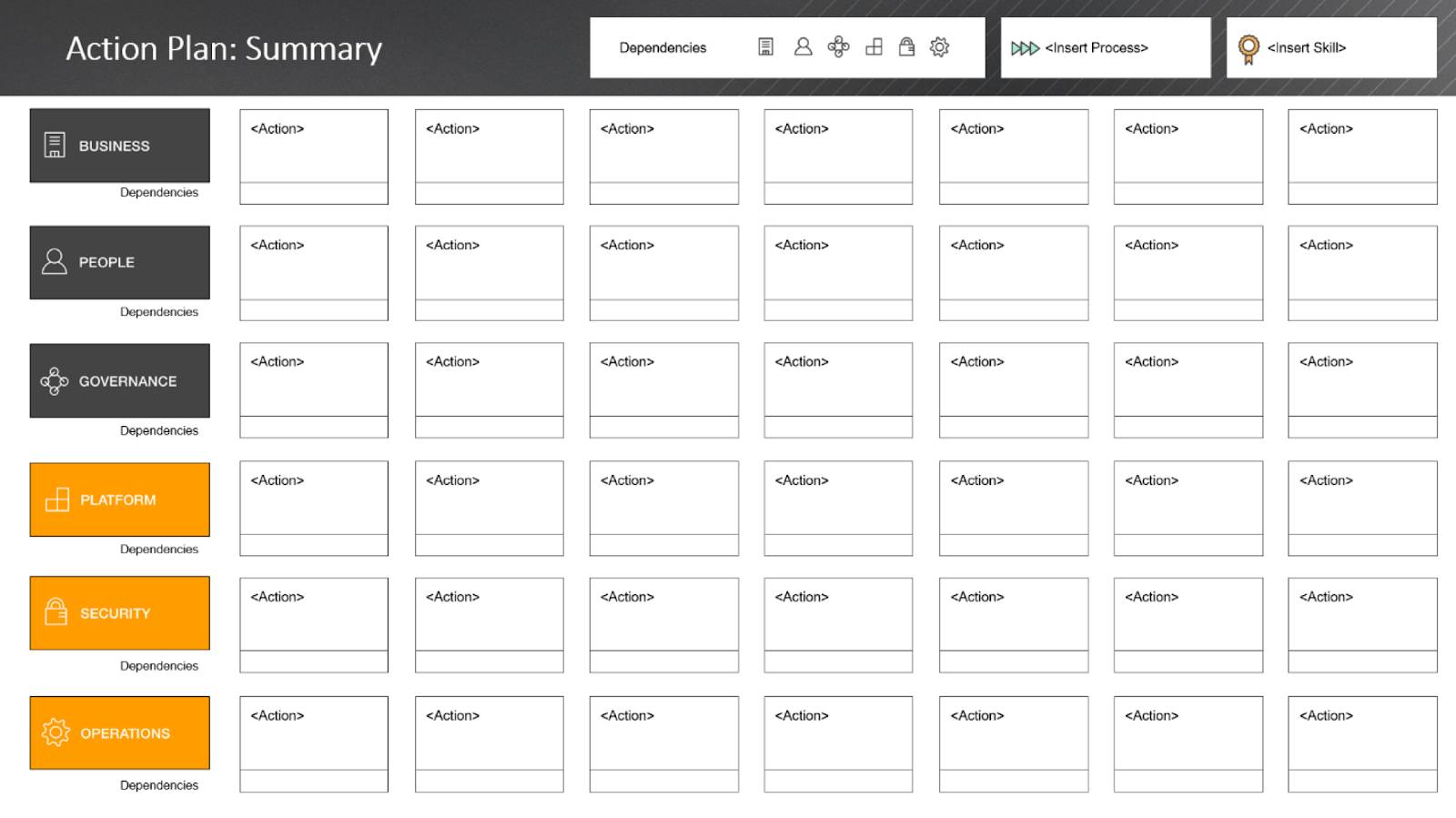Use the AWS Cloud Adoption Framework
Learning Objectives
After completing this unit, you’ll be able to:
- Explain the AWS Cloud Adoption Framework (CAF).
- Align each CAF perspective to key strategies in your business.
- Align each CAF perspective to key roles in your business.
Your cloud adoption journey is unique. To be successful, you need to understand your organization’s current state, where you want to end up, and how to get there. Knowing this helps you set goals and create tasks that enable you to thrive in the cloud.
AWS has built the AWS Cloud Adoption Framework (CAF) to help you assess your needs across a wide range of areas and develop the right workstreams to achieve your goals. It provides guidance and best practices for organizations to identify gaps in skills and processes. Finally, it helps you build a comprehensive approach to cloud computing across your organization.
Understand the Six Core Perspectives
At the highest level, the AWS CAF organizes guidance into six areas of focus, called perspectives. Each perspective addresses distinct responsibilities. The planning process helps the right people across the organization prepare for the changes ahead.
In general, the Business, People, and Governance perspectives focus on business capabilities, while the Platform, Security, and Operations perspectives focus on technical capabilities.
1. Business Perspective

The Business Perspective ensures IT is aligned with business needs and that IT investments are linked to key business results.
Use the Business Perspective to create a strong business case for cloud adoption and prioritize cloud adoption initiatives. Ensure that your business strategies and goals align with your IT strategies and goals.
Common roles in the Business Perspective include:
- Business managers
- Finance managers
- Budget owners
- Strategy stakeholders
2. People Perspective

The People Perspective supports development of an organization-wide change management strategy for successful cloud adoption.
Use the People Perspective to evaluate organizational structures and roles, new skill and process requirements, and identify gaps. This can help prioritize training, staffing, and organizational changes.
Common roles in the People Perspective include:
- Human resources
- Staffing
- People managers
3. Governance Perspective

The Governance Perspective focuses on the skills and processes to align IT strategy with business strategy. This ensures you maximize the business value and minimize risks.
Use the Governance Perspective to understand how to update the staff skills and processes necessary to ensure business governance in the cloud. Manage and measure cloud investments to evaluate business outcomes.
Common roles in the Governance Perspective include:
- Chief information officer (CIO)
- Program managers
- Enterprise architects
- Business analysts
- Portfolio managers
4. Platform Perspective

The Platform Perspective includes principles and patterns for implementing new solutions in the cloud, and migrating on-premises workloads to the cloud.
Use a variety of architectural models to understand and communicate the structure of IT systems and their relationships. Describe the architecture of the target state environment in detail.
Common roles in the Platform Perspective include:
- Chief technology officer (CTO)
- IT managers
- Solutions architects
5. Security Perspective

Ensure that the organization meets security objectives for visibility, auditability, control, and agility. Use the AWS CAF to structure the selection and implementation of security controls that meet the organization’s needs.
Common roles in the Security Perspective include:
- Chief information security officer (CISO)
- IT security managers
- IT security analysts
6. Operations Perspective

The Operations Perspective helps you enable, run, use, operate, and recover IT workloads to the level that is agreed upon with your business stakeholders.
Define how day-to-day, quarter-to-quarter, and year-to-year business is conducted. Align with and support the operations of the business. The AWS CAF helps stakeholders define current operating procedures, and identify the process changes and training needed for successful adoption.
Common roles in the Operations Perspective include:
- IT operations managers
- IT support managers
Create an Action Plan
The action plan is a key part of the AWS CAF. Creating an action plan for cloud adoption helps you migrate to the cloud faster, achieve desired outcomes, and avoid common mistakes.
Creating an action plan helps you:
- Voice challenges and concerns related to cloud adoption.
- Align to proactive solutions.
- Avoid pitfalls in the transition to a cloud-based IT model.
The action plan you create is based on the six perspectives described above. As you review each perspective you begin to define how stakeholders in each functional area update skills and processes to support a successful cloud adoption.
This occurs in four steps:
- Identify which stakeholders are critical to cloud adoption.
- Understand the questions and concerns that may delay or impede adoption for those stakeholders.
- Identify skills or processes that you need to update to address those questions or concerns.
- Create an action plan for updating the identified skills and/or processes.
Below is an example of a blank Action Plan Summary.

To get started, take the 16-question AWS Cloud Adoption Readiness Tool (CART) assessment. Once you complete it, you can download a report with recommended steps to improve your readiness. This report provides information to help you create your action plan.
AWS CAF Wrap-Up
AWS provides standardized cloud technologies needed to build a customized solution for your organization. Focus your requirements on the outcomes and benefits you wish to achieve, and then create an action plan to accomplish those goals. Use the AWS CAF to organize your planning and ensure you are including all of the relevant stakeholders in the process.
In the next unit, you look at factors and tools to consider when migrating to the AWS Cloud.